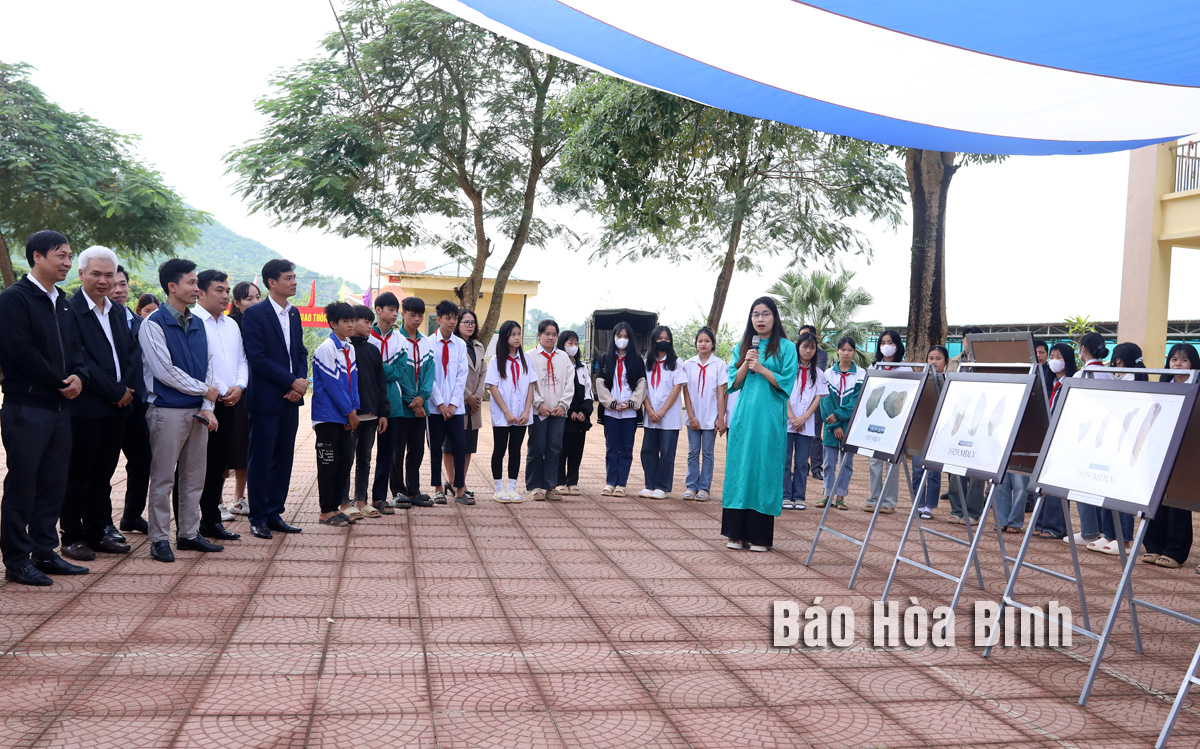



Delegates and students watch photos on display at the programme.
The students were introduced to the origin of the name "Hoa Binh Culture", Trai hamlet’s cave in Tan Lap commune, and Vanh village’s stone shelter; and watched photos featuring the research, archaeological process and cultural activities related to the relic sites in Lac Son district.
Notably, the stone shelter shows the characteristics of a large relic site in the core area of Hoa Binh Culture in Vietnam. This is evidence of the origin of Hoa Binh Culture in Vietnam and Southeast Asia.
It was recognised as a national archaeological site by the Ministry of Culture and Information (now the Ministry of Culture, Sports and Tourism) in 2003, and as a special national relic site by the Prime Minister in July 2024.
The programme was a meaningful activity to raise awareness and foster love for national culture and traditions among students. It was also an opportunity for them to learn about and remember the historical values and cultural beauty that have contributed to forming the identity of the homeland, thereby joining hands to protect, preserve and promote traditional cultural values.
At the end of May, the Hoa Binh Provincial Ethnic Arts Troupe organized a series of performances for residents in Region 2 and Region 3 communes across the province. Bringing art to ethnic communities in remote, isolated, and especially disadvantaged areas has become a meaningful activity. These are not merely artistic performances but also journeys to disseminate cultural values, enrich spiritual life, and contribute to preserving the cultural identity of ethnic minorities.